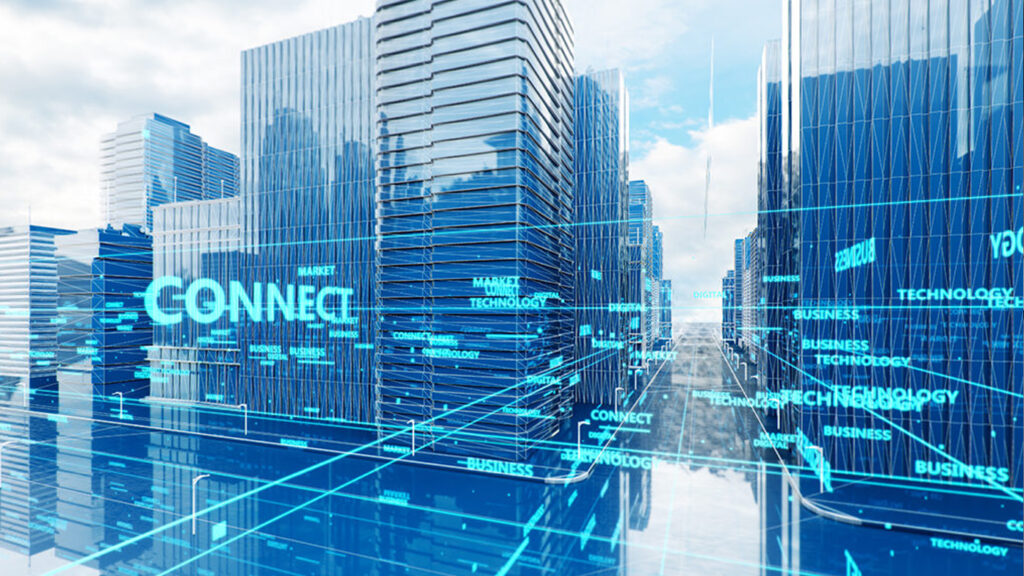The evolution of the workplace over the past decade has been enormous. We’ve seen cubicles turn into open-plan work spaces, which have then turned into activity-based work fitouts. Buildings have become more than standalone rectangles — they are now places where people want to immerse themselves and be connected.
With a number of new office developments on the horizon, it’s not surprising that property groups have strategies for enhancing the technology in their building — not only to attract tenants, but to future-proof the asset.
Andrew Beasley, Colliers International national director of office leasing, said: “Tenants are considering their long-term needs. They’re looking to the future and we’re talking 10 to 15 years or longer ahead.
“What’s relevant now won’t necessarily be relevant in the future, so we’re constantly being asked to assist in the planning phase of a development, as we have insights into what tenants want. At the same time, our work space planning team is consulting tenants on what they need to consider for their work space.
“We need to realize that in 10 to 15 years’ time, the demographics of a company’s workforce will change. The teenagers of today are the leaders of tomorrow. Their needs and how they’ll work will be a lot different to today’s workforce.”
Leading diversified Australian property group, Mirvac, is taking what is currently known about technology and fast-tracking it into the future. Gone are the days of just an ‘office building’; the focus now is on ‘smart buildings’. Smart buildings mean people are constantly connected. They collect data and use the information to improve the building’s efficiency and sustainability.
Ben Mason, Mirvac’s services manager of project design management, said: “Smart buildings are a new minimum standard to compete for relevance in the modern age.
“These buildings can have a range of features, from sensors collecting a variety of data to analytical software to ingest the data and turn it into actionable improvements.”
Mr. Mason warns that such technology should not be implemented for the sake of it. Rather, he suggests carefully selecting technology to serve a purpose and solve problems within the operation and occupation of the building.
Three items that Mirvac selected as part of the smart building agenda to be implemented at its Olderfleet building at 477 Collins Street, Melbourne include:
1. An Integrated Platform
Imagine if you could have one platform that improved the overall operating efficiencies and long-term performance of your asset. Olderfleet will have that feature.
The Integrated Platform provides an architecture that enables data from various building systems to be collected, consolidated, processed, analyzed, presented and made available for other applications or use cases.
The data exchange between each building system is done via the building’s the Intercommunications Network (ICN) up to the Integration Platform, except where governed by legislation, such as fire mode operation.
The information captured in the Integrated Platform can be shown in the tenant portal and will be accessible on mobile devices. Depending on the level of access based on role and company area, individuals will be able to view:
- Building user management
- Visitor management and car park booking
- Energy usage and billing
- Floorplans (security, CCTV, mechanical, electrical, fire and hyd sensors.)
- Lighting control and afterhours temperature control
- Space utilization and floor occupancy
The Integrated Platform will also provide an enhanced health and wellness aspect by monitoring elements such as air quality and lighting, as defined by the WELL Building Standard. It will also have the Building Information Management (BIM) system and Facilities Management (FM) system integrated into a central repository. Integrating the BIM into the Integrated Platform will give a visual representation of digital information to allow for a more complete overview of the building, ultimately helping with maintenance, locating equipment and improving risk management in operations.
By storing all of the connecting building systems in a single Integrated Platform, future problems will be more easily identified by using the buildings data in new and different ways. It will also assist Mirvac by allowing tenants of the building to understand their workspaces in more detail.
2. Smart & Connected Lighting
Olderfleet will give Mirvac the opportunity to seek a new form of lighting control, and so a total new smart sensor system has been chosen for the development. A sensor will be placed in each LED lighting fixture in the building and will be fully integrated into the base building fixtures. This is a Green Star initiative for localized lighting control, providing occupants with the ability to control the lighting in their immediate environment.
Olderfleet will utilize the ‘Enlighted’ system which provides power, ambient lighting, temperature control, motion and Bluetooth beacons. The wireless sensors collect data 24/7, transmitting it back to the local gateways that are connected by ICN.
The lighting control system is accessible on the tenant’s portal, and the Bluetooth beacon functionality built into the sensors removes the need for additional infrastructure, and provides for location services.
This lighting control system provides a unique technology solution for both lighting control and space utilisation through a single system, giving immediate benefits to occupants throughout. Occupants will also be able to track usage of their workspace and understand where spaces are most utilised and under-utilised, offering space planning data that will assist in future business decisions.
3. An Interconnected Building Backbone
An ICN will be the backbone to the Olderfleet development. It will enhance how building data is monitored, displayed, archived, reported on and controlled and will service all floors throughout the building.
The ICN is a single converged network incorporating the Integrated Platform required for the project. The network will serve to interconnect the buildings systems, centralize services and head end equipment within a dedicated room, which is temperature controlled and securely monitored.
The ICN will also allow the building systems to communicate with each other in a secure way to benefit Mirvac and tenants within the building. This system will make the buildings infrastructure IP-based and align it with modern technology. It will allow tenants to expand the base building systems such as HVAC Controls and lighting controls in an easy and modular way.
Cyber security is something Mirvac has also taken into consideration, with firewalls and policy settings aligning with Mirvac’s cyber security policy.
Mirvac will provide field equipment racks containing active equipment and passive cabling on each floor of the building, to cater for capacity and growth as system demands develop over the life of the building, allowing for occupants’ needs to grow as well.

 Andrew Beasley
Andrew Beasley

 Matt Gannon
Matt Gannon Craig Hurvitz
Craig Hurvitz
 Aaron Jodka
Aaron Jodka Miles Rodnan
Miles Rodnan Andrew Wellman
Andrew Wellman
 Marianne Skorupski
Marianne Skorupski